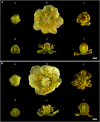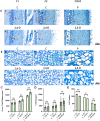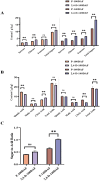Effects of plant growth regulator (2,4-D) treatments on fruit development and chemical content in the kiwifruit plant (Actinidia chinensis)
- PMID: 40813636
- PMCID: PMC12351838
- DOI: 10.1186/s12870-025-07138-w
Effects of plant growth regulator (2,4-D) treatments on fruit development and chemical content in the kiwifruit plant (Actinidia chinensis)
Abstract
As a dioecious fruit tree, Kiwifruit requires pollination for female plants to bear fruit. This study used 2,4-Dichlorophenoxyacetic acid (2,4-D), a plant growth regulator, to induce fruit set, improve quality and increase kiwifruit yield in Actinidia chinensis var. 'Donghong' without pollination. Exogenous application of 2,4-dichlorophenoxyacetic acid (2,4-D) effectively triggered parthenocarpic fruit development in 'Donghong' kiwifruit (Actinidia chinensis var. 'Donghong'), while significantly improving fruit quality. The fruit set rate of parthenocarpic fruits reached 16.95% with 2,4-D treatment at 140 days after flowering; female flowers treated with 2,4-D showed differences in pollen structure compared to those treated with water. Also, no viability was detected in female flower pollen treated with 2,4-D. At the maturity stage, the fruits from the 2,4-D treatment were slightly smaller than those from the control group. The 2,4-D treatment group showed significant differences from the control group in skin hardness, flesh firmness and core hardness. There was no significant difference in the soluble solids content between the fruits treated with 2,4-D and those from the control group at maturity. However, the dry matter content of the 2,4-D treated fruits was lower than that of the pollinated fruits. The soluble sugar content of mature fruits from 2,4-D treatment reached 18.59 g/kg, and organic acid content was 18.10 g/kg, resulting in a significantly higher sugar-acid ratio than the control group. The seeds from 2,4-D treated fruits failed to germinate normally. This technology can facilitate the induction of fruit sets in actual production, which has significant practical value and potential in kiwifruit processing. From these results, important data were obtained regarding the establishment and production of kiwifruit orchards without including pollinator varieties, which take up a significant amount of space in the orchard establishment and cause a decrease in the yield obtained from the total area.
Keywords: 2,4-D; Fruit quality, germination; Kiwifruit; Parthenocarpy.
© 2025. The Author(s).
Conflict of interest statement
Declarations. Ethics approval and consent to participate: All methods and experimental research were carried out in compliance with local and national guidelines. Competing interests: The authors declare no competing interests. Clinical trial number. It is not applicable.
Figures







References
-
- Li ZZ, Kang M, Huang H, Testolin R. Phylogenetic relationships in actinidia as revealed by nuclear DNA genetic markers and cytoplasmic DNA sequence analysis. Acta Hortic. 2007;753:45–58.
-
- Qi B, Wang F, Ye K, Mo Q, Gong H, Liu P, Jiang Q, Li J. Genetic diversity of 52 species of kiwifruit (Actinidia chinensis Planch). Horticulturae. 2023;9:753.
-
- Marco E, Maria CM, Paola B, Fiorella S, Elisabetta M, Antonino N, Paolo F, Giuseppe P. Chemical compounds and sensory assessment of Kiwifruit (Actinidia chinensis (Planch.) var. chinensis): electrochemical and multivariate analyses. Food Chem. 1998;61:293–300.
-
- Sharon JH. The nutritional composition of Kiwifruit (Actinidia spp.). Nutr. Compos. Fruit Cultivars; 2016.
MeSH terms
Substances
Grants and funding
LinkOut - more resources
Full Text Sources
Research Materials

